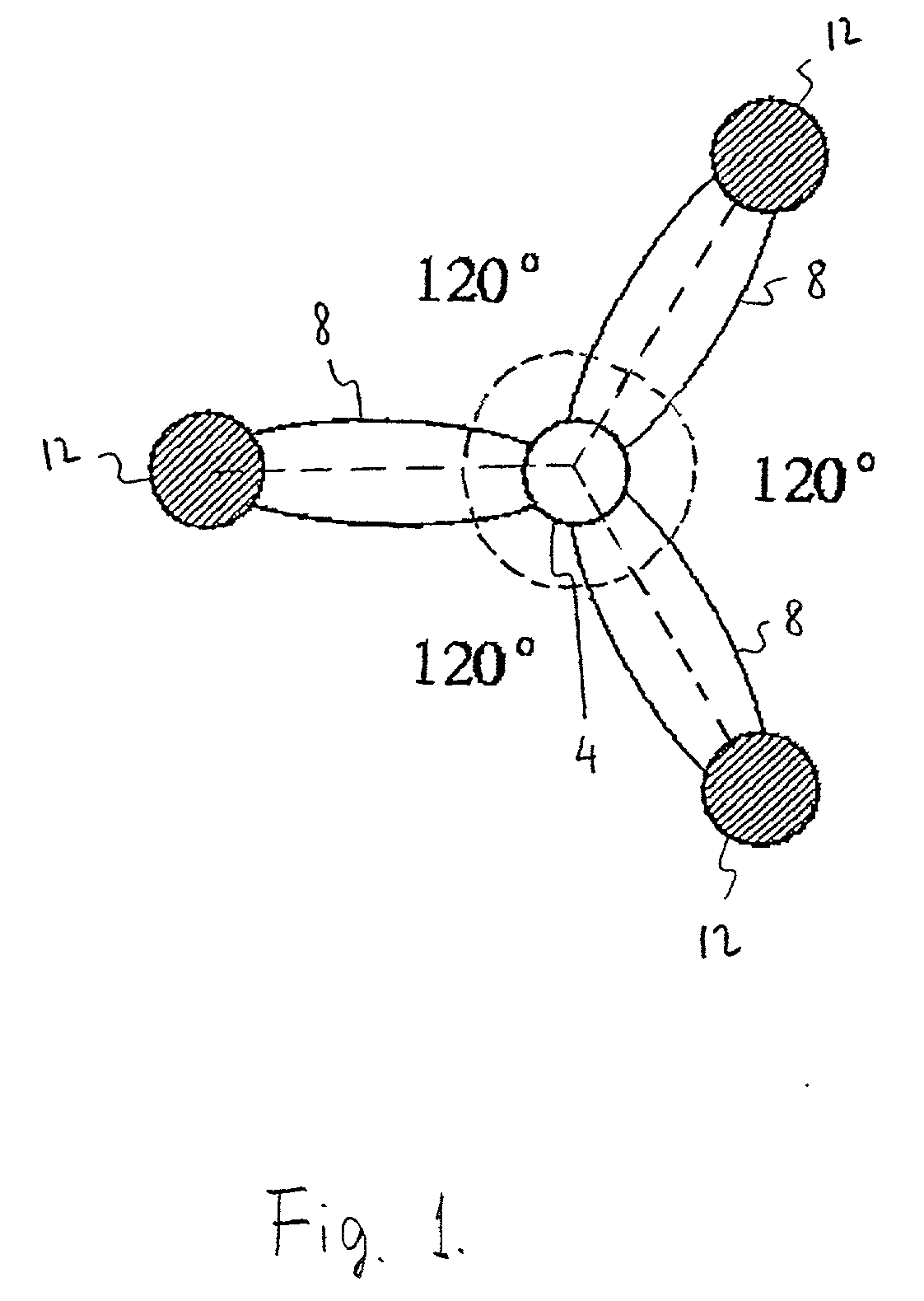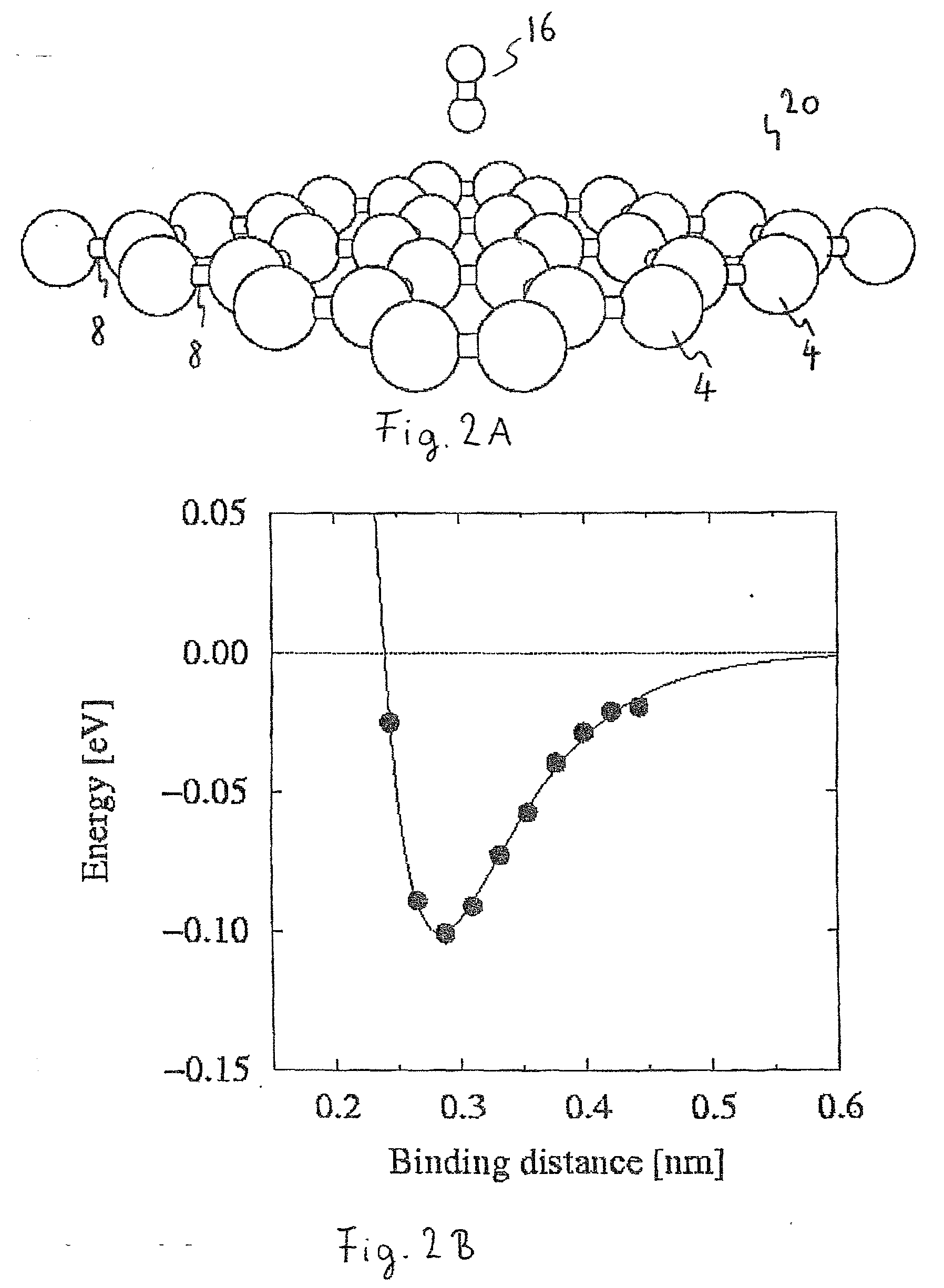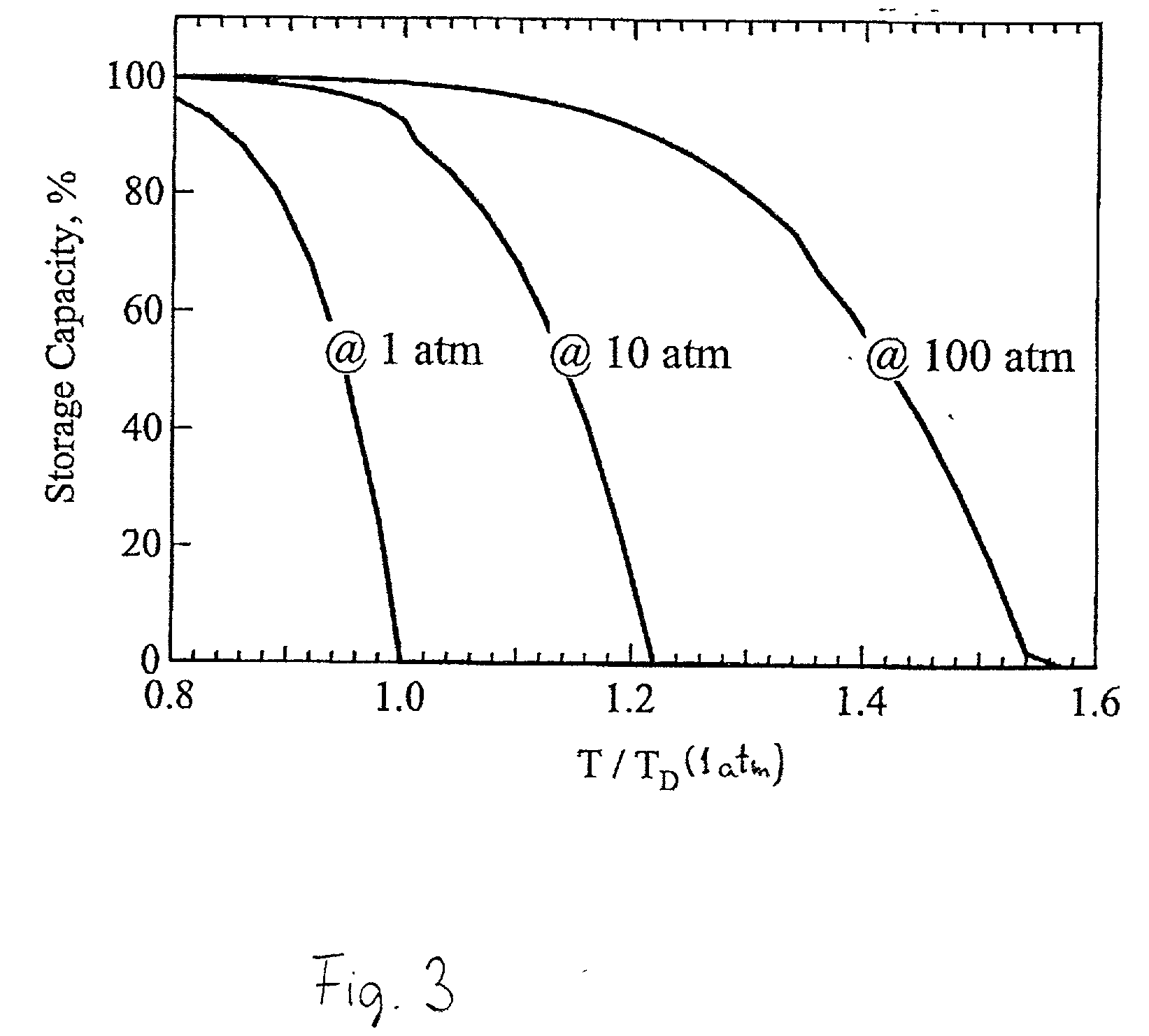Increasing hydrogen adsorption of nanostructured storage materials by modifying sp2 covalent bonds
- Summary
- Abstract
- Description
- Claims
- Application Information
AI Technical Summary
Benefits of technology
Problems solved by technology
Method used
Image
Examples
Embodiment Construction
[0050] In accordance with the invention, a nanostructured storage material 22 is presented for storing hydrogen. Nanostructured storage material 22 includes a network of light elements 24, selected from Be, B, C, N, O, F, Mg, P, S, and Cl. Light elements 24 are utilized to improve the weight % storage efficiency of nanostructured storage material 22, thus making it suitable for use in transportation and other industrial applications.
[0051] Previous works have described planar triangular lattices, formed from one type of atoms, coupled by sp2 bonds. In the present invention, the light elements of the network are coupled by modified sp2 bonds. Theoretical considerations and experiments have shown that some networks, containing modified sp2 bonds, are capable of adsorbing more hydrogen than planar triangular lattices that are formed from one type of atoms, which are coupled by sp2 bonds. Modifying the sp2 bonds can change the hybridization of the s and p electrons. Changing the hybrid...
PUM
 Login to View More
Login to View More Abstract
Description
Claims
Application Information
 Login to View More
Login to View More - R&D
- Intellectual Property
- Life Sciences
- Materials
- Tech Scout
- Unparalleled Data Quality
- Higher Quality Content
- 60% Fewer Hallucinations
Browse by: Latest US Patents, China's latest patents, Technical Efficacy Thesaurus, Application Domain, Technology Topic, Popular Technical Reports.
© 2025 PatSnap. All rights reserved.Legal|Privacy policy|Modern Slavery Act Transparency Statement|Sitemap|About US| Contact US: help@patsnap.com



